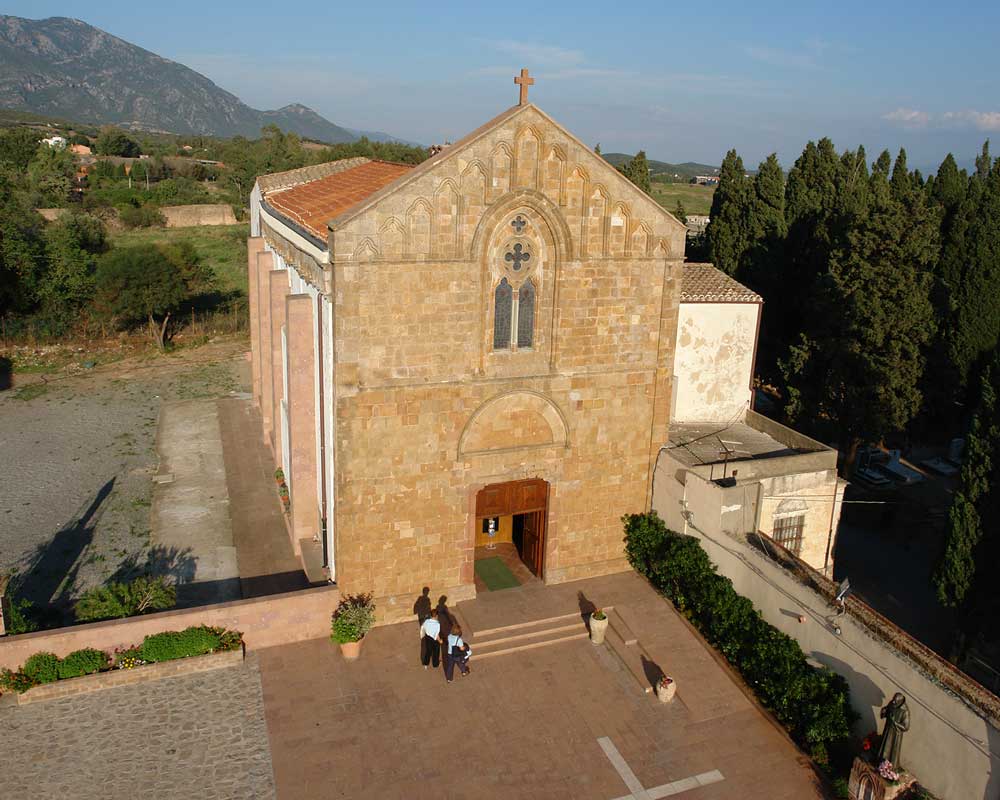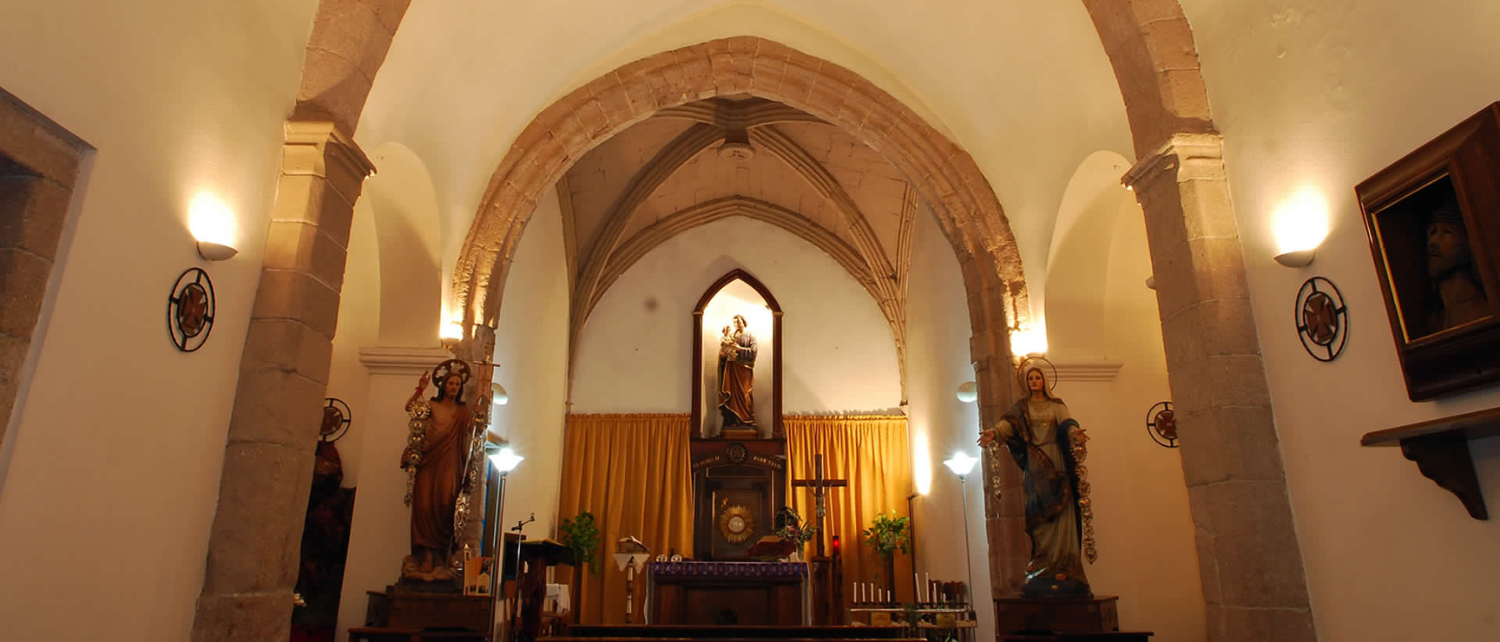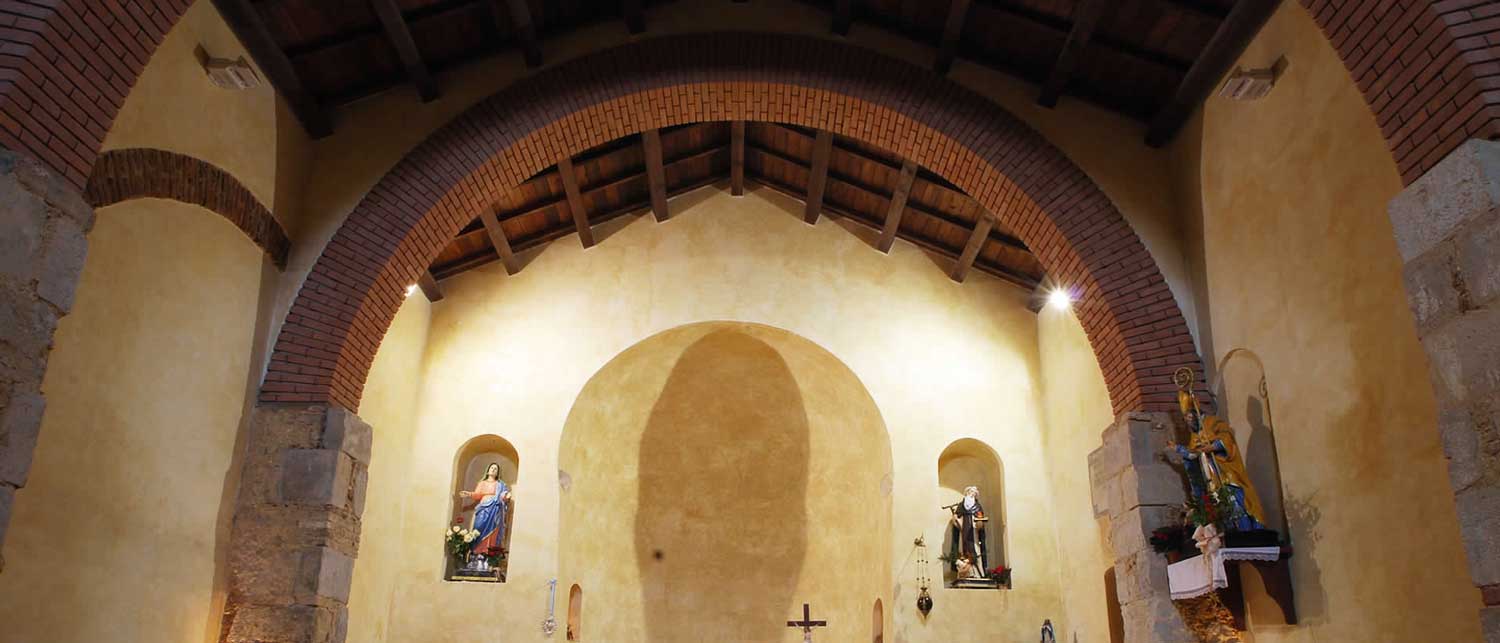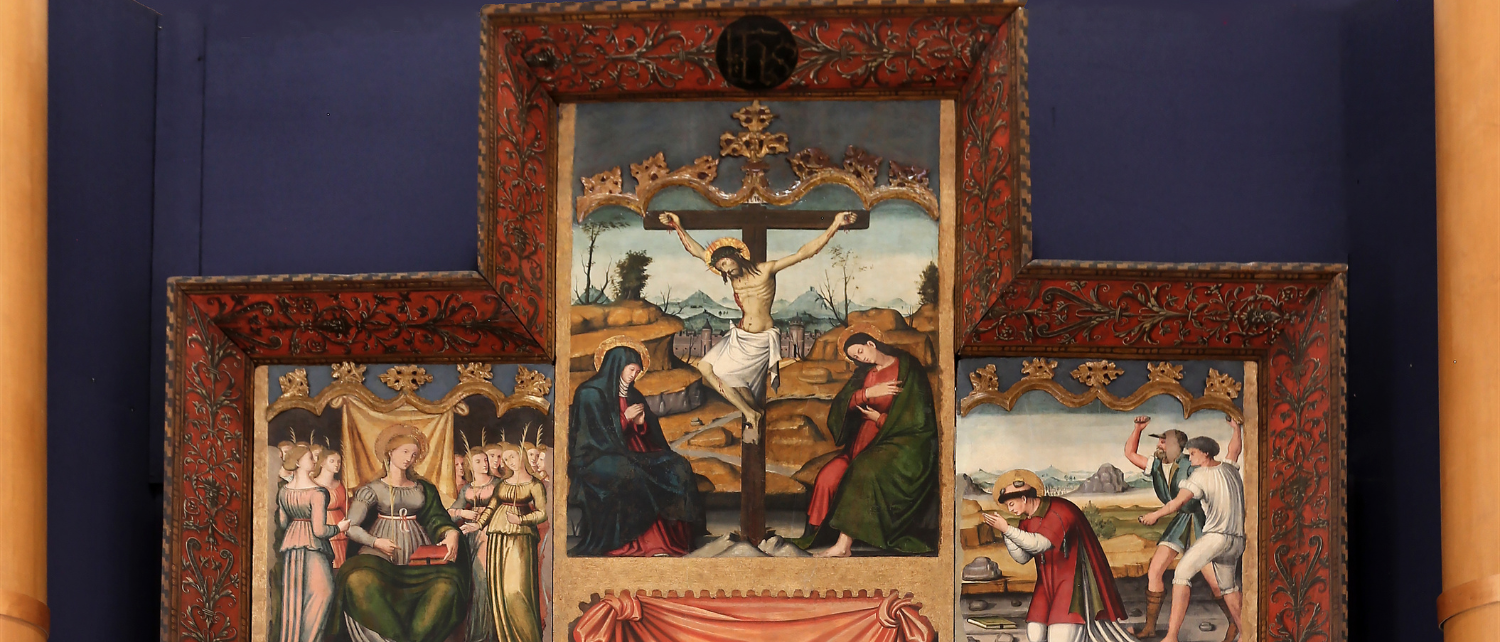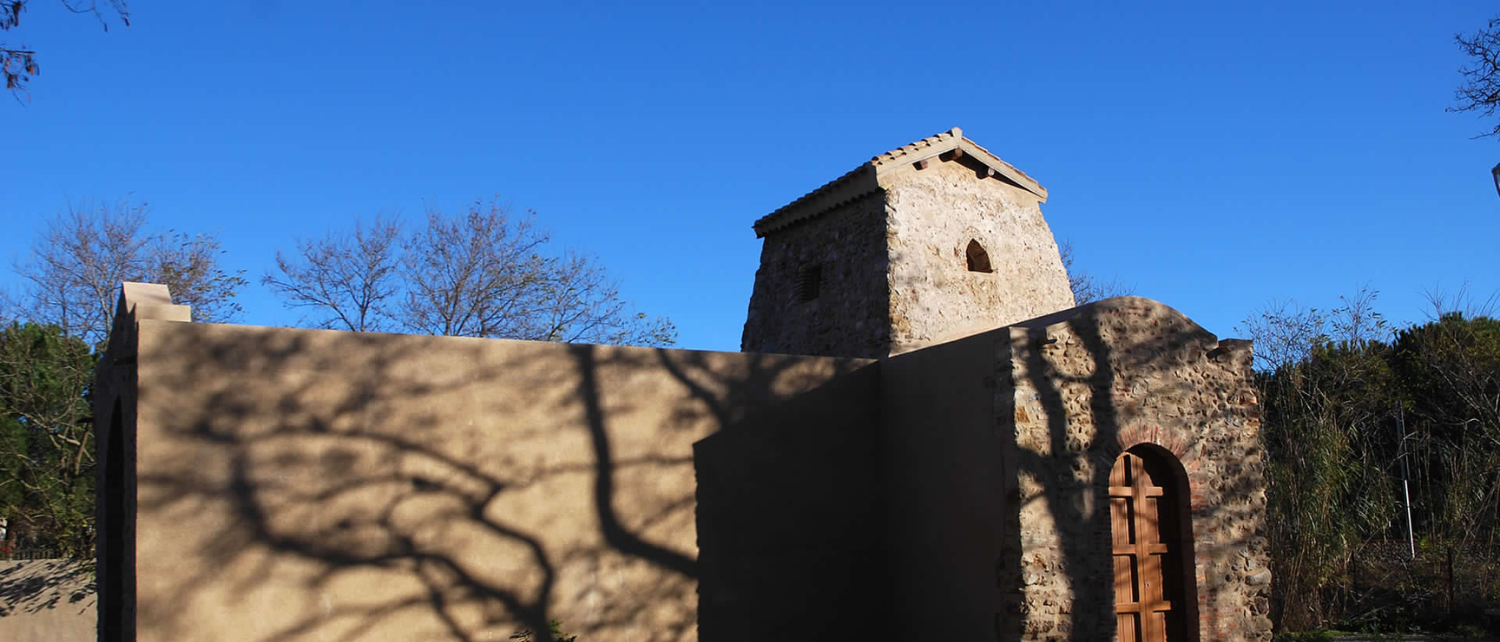The church, built around the end of the 13th century, represents an architectural model with Roman origins and Gothic lines.
The façade, entirely made of volcanic ashlars, is divided into two orders by a molded horizontal cornice. In the first order, there is the portal surmounted by a round arch with hood moulding, while in the second order, there is a Gothic window, with hood moulding too.
The interior underwent profound transformations at the end of the 16th century: the original roof with trusses was replaced with pointed arches supporting wooden sloping roofs; the new squared presbytery was covered with a ribbed vault; two chapels were opened on the right side, while the one on the left is now walled up.
In the central gem, the largest one, the Madonna and Child are depicted. In the four minor gems, respectively, the name of the author of the work: Melchiorre Serra; the date of execution of the work 1592; the name of the supervisor of the factory, the “obrer” Antioco Spada; the monogram of Christ JHS.
